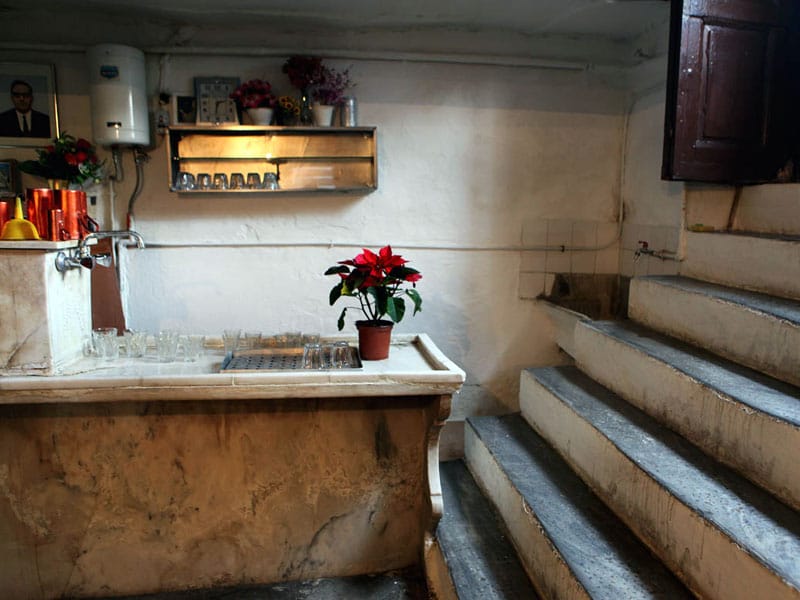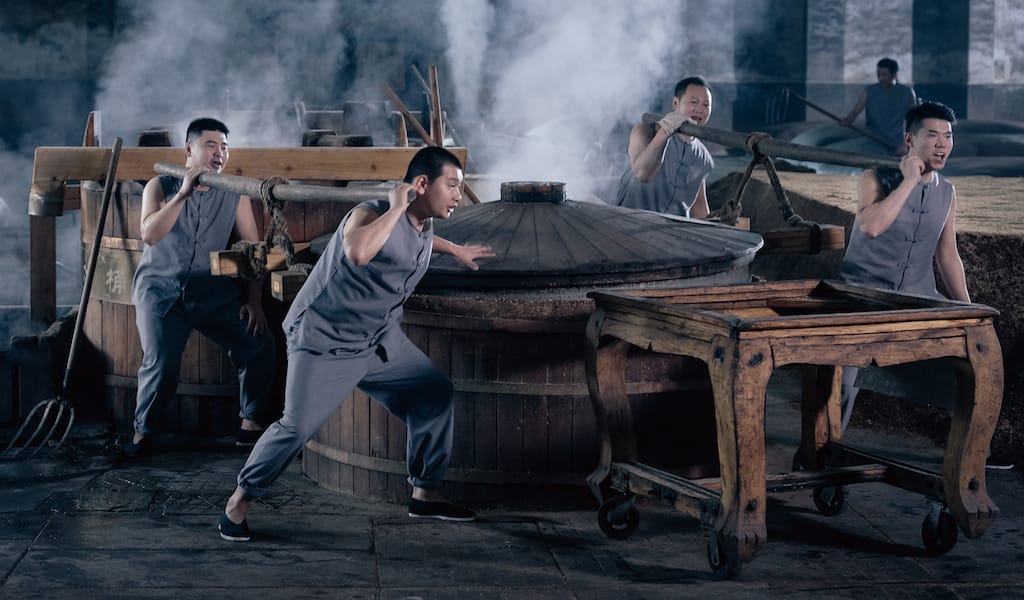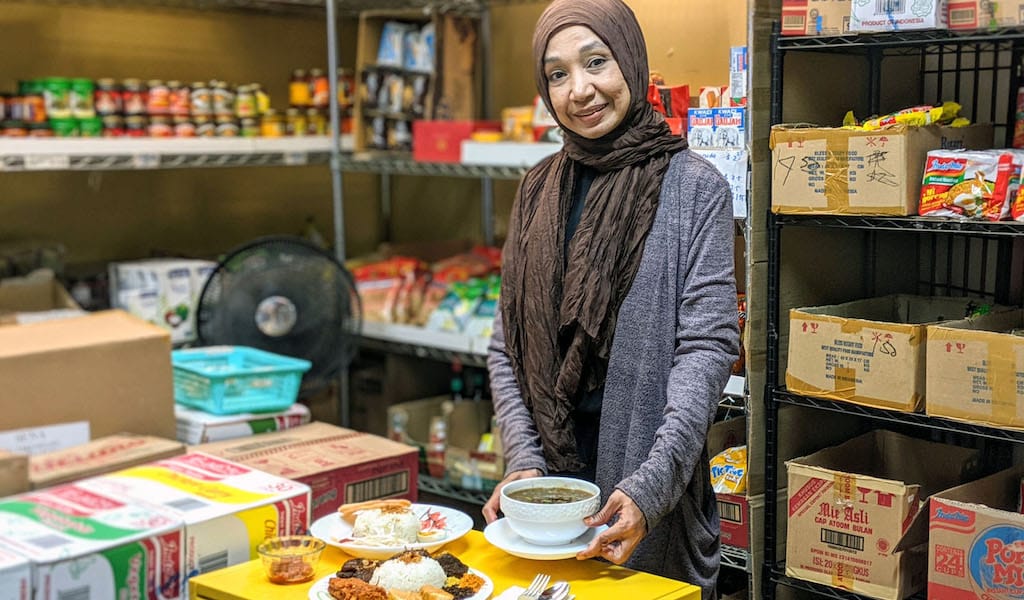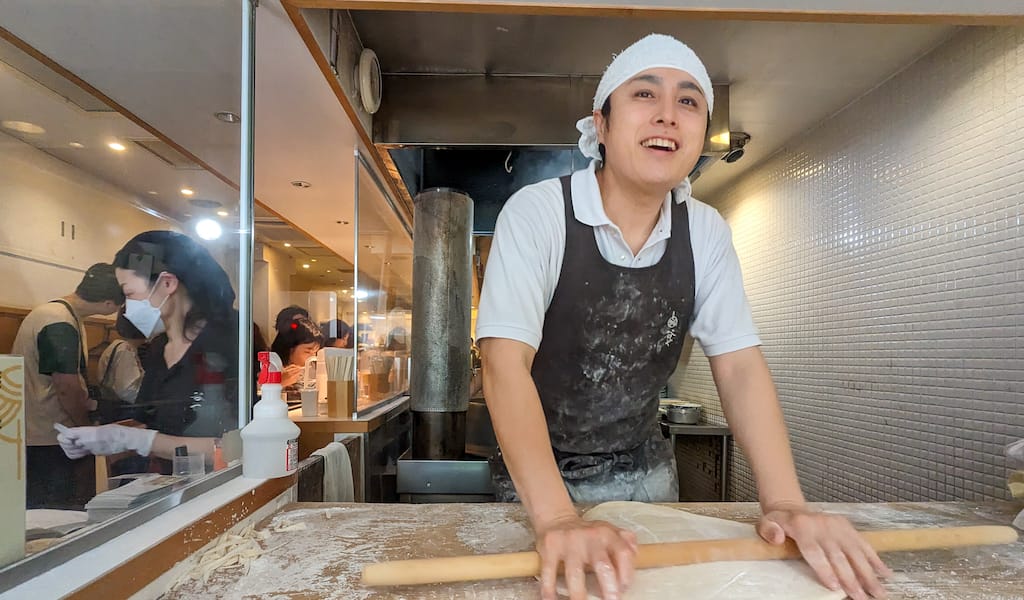Editor’s note: It’s Soup Week at Culinary Backstreets, and today we head to a 128-year-old basement taverna in downtown Athens that serves a wintertime specialty of chickpea soup.
In business since 1887, Diporto – a defiantly traditional spot in downtown Athens – has no sign and no menu. The staff doesn’t speak a word of English, and you might have to share a table with eccentric old men who look like they stepped out of a folk ballad. You will probably have to mime your order or draw it on the paper tablecloth. But if you ever wondered what it would be like to eat in a working-class Greek taverna circa 1950, read on.
Diporto is located smack in the middle of what is – at least by day – one of the Athens’ most fascinating areas, home to a variety of specialized marketplaces. Varvakeios, one of the few of its kind in Europe, is the city’s largest fish and meat market, in operation since 1886. Around this enormous, chaotic market, where vendors try to outdo each other in shouting, lies Athens’ traditional center of trade, with streets devoted to specific merchandise: hardware stores and bric-a-brac on Athinas Street; spices, cheeses, kitchen equipment and plants on Evripidou and Sofokleous; doorknobs on Vissis (yes, there is a street dedicated solely to doorknobs).
The basement-level taverna – whose name means “having two doors,” for the very simple reason that there are two doors leading inside – is easy to miss, given the lack of a sign and fact that the place is literally underground. Once you walk down the well-worn steps, a cavernous world of wonders awaits you. The place is dark, with a faded concrete-block mosaic floor and one wall covered in wine barrels, which, unlike at most Athenian taverns, are not meant purely for décor but are actually used to store wine. From the vintage marble sinks and old-fashioned aluminum wine jugs to the garlic wreaths next to a 1950s fridge and the strong smell of food and smoke that sticks to your clothes, the atmosphere is so reminiscent of the Greece of another era as to be almost eerie, as if through stepping through those two doors you have somehow traveled back in time.
This is the kind of place where you can see pretty much anyone from the mayor of Athens to elderly men working in the market who like yelling about politics and their love lives (“I had a Bulgarian girlfriend for five years and then she died,” one man confided to another the last time we were there). There are just eight wooden tables and chairs, meaning that when it’s crowded you might have to sit with total strangers in front of the open kitchen, which is overflowing with pots and pans. The rustic peasant bread is placed directly on the paper tablecloth, without a basket or napkins – all the better for you to tear it with your hands.
Diners don’t come to Diporto looking for the latest in culinary experimentation; choices are limited to only five or six dishes each day, based on what’s in season and available in the nearby markets. The white-haired owner, Mitsos, a rather brusque athletic figure, lets you know what’s on offer. The venue’s wintertime specialty – and, to our minds, the highlight of a meal at 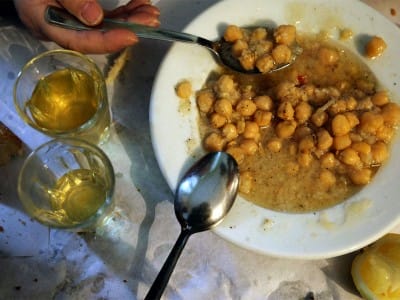 Diporto – is an excellent chickpea soup that comes in a large, shallow bowl filled to the brim and doused with olive oil; it’s enough to feed two people. This is simple home cooking, the chickpeas so soft they almost melt in your mouth. Other dishes, such as Greek salad, a plate of small fried fish, fried sausage or bean soup, are also consistently good.
Diporto – is an excellent chickpea soup that comes in a large, shallow bowl filled to the brim and doused with olive oil; it’s enough to feed two people. This is simple home cooking, the chickpeas so soft they almost melt in your mouth. Other dishes, such as Greek salad, a plate of small fried fish, fried sausage or bean soup, are also consistently good.
The house white is a good, cloudy retsina and – as is typical in tavernas – it is ordered by the kilo (a quarter, a half kilo or a kilo) and brought to your table in aluminum wine jugs. Retsina, which has been produced in Greece for more than 2000 years, is essentially white wine infused with pine resin, originally added by the ancient Greeks as a preservative. Often this is the simplest, cheapest wine available, but when it’s good there is something deeply comforting about it, making it the ideal accompaniment to Diporto’s home-style cooking.
As one might expect, this is not the kind of place that will necessarily bring you an itemized bill – you’ll have to mime or draw on your tablecloth if you want one. A salad, a chickpea soup, some fish and a quarter-kilo of wine should not cost more than €20. Prices, alas, are the one thing that has kept up with the times here.
This review was originally published on January 10, 2013.
 November 29, 2019 CB Book Club
November 29, 2019 CB Book Club
Hot off the success of his last book, Baijiu: The Essentials, baijiu expert Derek […] Posted in Shanghai November 8, 2019 Indo Java Groceries
November 8, 2019 Indo Java Groceries
For those not in the know, the bright yellow table behind the shelves at Indo Java […] Posted in Queens December 15, 2023 Best Bites 2023: Tokyo
December 15, 2023 Best Bites 2023: Tokyo
Sometimes Tokyo feels like a simulacrum, a pixel-generated city restlessly tearing […] Posted in Tokyo
Published on January 01, 2015
Related stories
November 29, 2019
Shanghai | By Culinary Backstreets
ShanghaiHot off the success of his last book, Baijiu: The Essentials, baijiu expert Derek Sandhaus has published Drunk in China: Baijiu and the World’s Oldest Drinking Culture (University of Nebraska Press; November 2019). This new title focuses in on Chinese drinks and how they have influenced nearly all aspects of life in China throughout its…
Join our walk for a deep dive into the immigrant cooking experience in Queens!
November 8, 2019
QueensFor those not in the know, the bright yellow table behind the shelves at Indo Java Groceries in Elmhurst, Queens, may seem like nothing more than a curious design choice. But what they don’t realize is that this table is a sign of something great – it means that one of three chefs is in…
December 15, 2023
TokyoSometimes Tokyo feels like a simulacrum, a pixel-generated city restlessly tearing itself down and rebuilding itself in the latest image of a megacity. The Shibuya skyline morphed over the past decade, punctuated by mega malls. This year has brought the opening of Azabudai Hills, a mega complex that features offices, residences, and even an international…







































